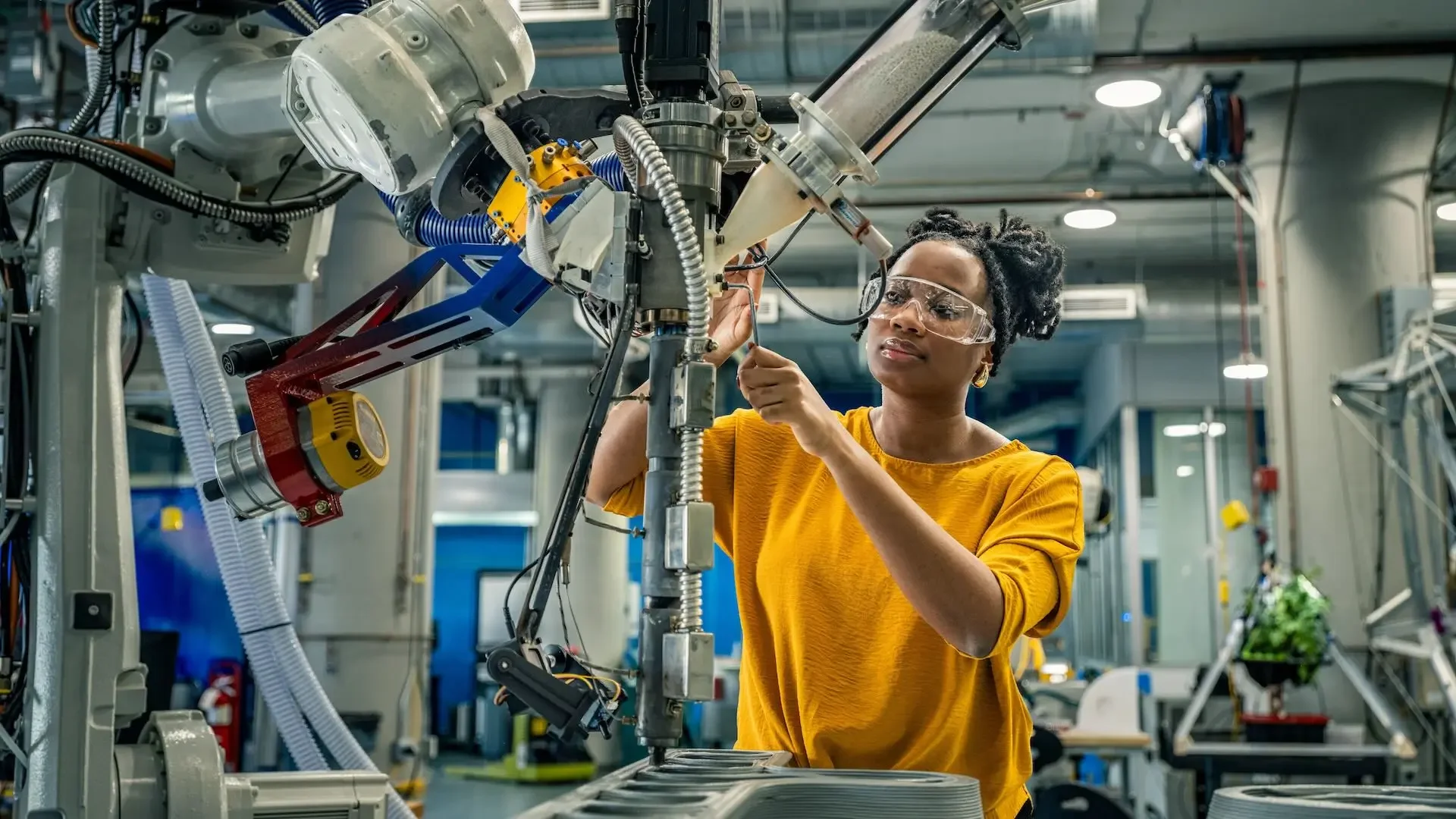Talent & Training: The Economics of Human Capital in Robotics
A researcher at Autodesk uses robots, generative design, and additive manufacturing to address engineering challenges.
Credit: Autodesk
From quasi-fixed expertise to scalable capability
Robotics projects succeed or stall on people—not just PhDs, but technicians, operators and the integrator crews who stitch everything together. The challenge is that expert labour behaves like a quasi-fixed cost: hard to hire, slow to scale, and easy to lose if projects lurch. The commercial response is to turn expertise into a repeatable capability through certification, tooling and simulation.
Certification is the first lever. Buyers increasingly ask whether their integrator partners meet external benchmarks; A3’s Certified Robot Integrator programme exists precisely to reduce variance and de-risk deployments. For internal teams, aligning training with the same vocabulary—grounded in ISO 10218 and related guidance—shortens onboarding and makes cross-site redeployment more practical.
Tooling is the second lever. Offline programming and digital-twin environments let teams design, prove and train away from live lines. ABB’s RobotStudio is a prominent example: a virtual controller that mirrors real behaviour, enabling programming, validation and even operator training before steel hits the floor. Simulation reduces the cost of mistakes and builds a corpus of reusable know-how that outlives any single engineer.
Safety culture is the third. OSHA’s updated robotics guidance, together with NIOSH’s dedicated centre for occupational robotics research, give companies shared references for training curricula and incident response. Even mundane clarifications—like treating the EOAT as an integral part of the system—help align engineering and EHS teams around the same risk picture.
GTM thinking follows naturally: vendors that productise training—operator certifications, refresher modules, simulation-based drills—and who publish mean-time-to-competence alongside mean-time-to-repair, are easier to buy and keep. Integrators who build academies and offer co-badged training with OEMs tend to get repeat awards, because buyers value predictability of crew performance as much as unit performance.
The meta-lesson is that talent risk is manageable if you invest in standards-aligned training, high-fidelity simulation, and transparent safety governance. Do that, and you turn a scarce input into a scalable asset.
